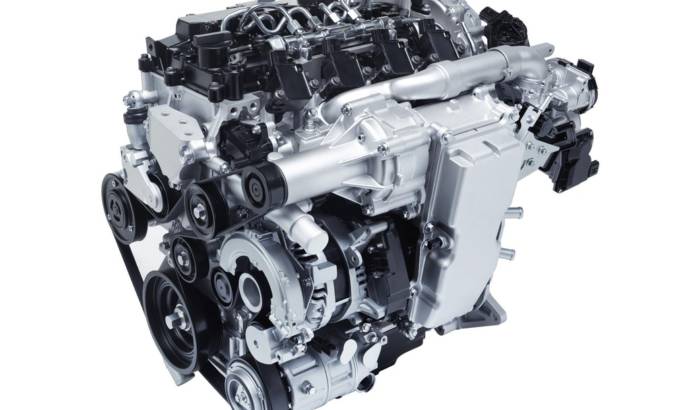Mazda is one of the few manufacturers who still believe in combustion engines and innovate in this direction. Mazda is committed to reducing its corporate average ‘Well-to-Wheel’ CO2 emissions to 50% of 2010 levels by 2030, and to 90% by 2050.
Powered by petrol, the new SKYACTIV-X SPCCI engine offers Mazda customers the best attributes of both spark and compression ignition. With two thirds of global electricity production currently relying on the use of fossil fuels, Mazda believes regulations placing the emissions of an EV (electric vehicle) at zero to be disingenuous.
One of the key control factors is the use of a highly lean mixture of air and fuel: 2-3 times leaner than in today’s conventional engines. This mixture has so little fuel in the air that a normal engine with spark plugs cannot fire it.
Mazda already uses uniquely high compression ratios on its current SKYACTIV petrol engines to reduce fuel consumption, so this lead to the idea of increasing the compression ratio even further and igniting the fuel simply by compression as is the norm in modern diesel engines. Mazda rethought the whole process and developed its own proprietary combustion method -Spark Controlled Compression Ignition (SPCCI) and the company’s new 2.0 litre SKYACTIV-X engine that uses this process.
By controlling the compression ignition with a spark plug, the issues of knocking and unstable combustion can be avoided, achieving a seamless transition between compression ignition and spark ignition. This means the engine can run more than 80% of time in a very efficient mode. In areas where low vehicle speeds are used frequently, fuel economy can be improved by up to 30% and CO2 emissions reduced by a corresponding amount thanks to the use of super lean combustion. Compared to the MZR engine of 2008, fuel economy is improved a dramatic 35-40%, and SKYACTIV-X even equals or exceeds Mazda’s latest SKYACTIV-D diesel engine in fuel efficiency.
The range within which the engine is able to deliver excellent fuel economy has been dramatically expanded with the use of the SKYACTIV-X, meaning that this system is able to deliver lower fuel consumption than ever before in a wide range of driving scenarios, including both urban and long-distance motorway driving.



